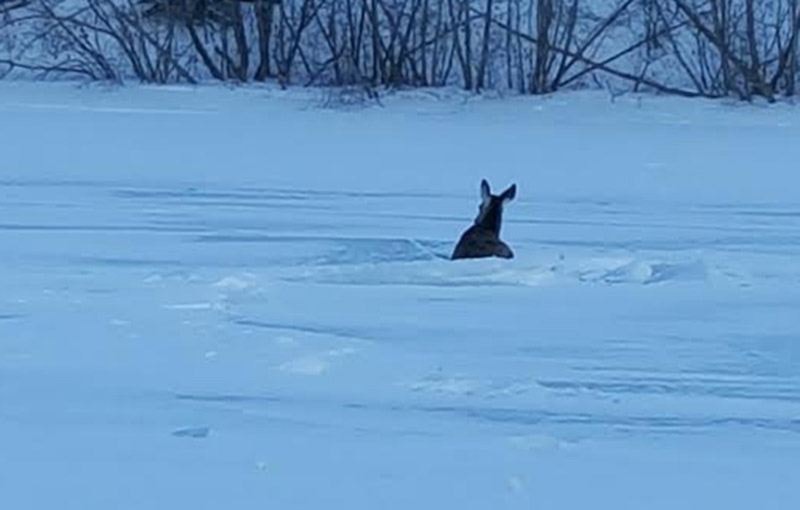A dog that chased a mule deer onto the Yukon River appears to have contributed to the ungulate’s death even if it never actually made contact with its prey.
A necropsy has been completed on a deer carcass found on the river last week near the Kwanlin Dun Cultural Centre.
It found that the female deer may have suffered from exertional myopathy, a condition where physiological changes caused by stress damage muscle tissue. It is almost always fatal. The animal was also in poor health, with very few fat reserves.
“It was very logical to suggest that the dog chasing the deer, and the deer being in poor condition to start with … the deer could not recover from that,” said Yukon conservation officer Kirby Meister.
Meister said officers were called to the river Feb. 7 and found the deer lying on the ice.
It had no visible injuries, was holding its head up and “quite alert,” he said.
Witnesses told the officers the deer was being chased by a dog. One person had captured the chase on a cell phone.
“In the video you can see the dog is chasing the deer, the deer is up running around, running in circles, turning and twisting.”
Since the officers saw no signs of injury they thought it was possible the animal would get off the ice by itself, Meister said.
“Our main hope was, and usually is, let’s give the animal a chance to recover on its own and remain in the wild. Our belief was that’s definitely a possibility.”
Any rescue would have been dangerous for the humans involved. The animal was on thin ice and near open water.
“If we decide to go onto the ice, we’re into basically what we refer to as ice rescue, we’re going to need trained personnel with proper equipment. (There was) definitely a safety concern out there for staff or anyone to be out there on that ice,” Meister said.
It was also getting closer to dark and there is no way anyone would have performed an ice rescue in the dark, he said.
By the time conservation officers went back to the river the next day, the deer was dead. Overnight it had moved to a safer place on the ice so staff were able to recover the carcass.
“Our staff still roped up and put on their survival gear and all that to even get at it where it was. It was definitely a different level of risk than it had been the previous evening.”
Dr. Jane Harms, Environment Yukon’s program veterinarian, said exertional myopathy can be found in all types of animals but is common in ungulates like deer.
The fight-or-flight response when an animal is stressed leads to hormonal changes, she said. Soon there is not enough oxygenated blood moving through the muscles. That plus the heat from the exertion starts causing the muscles to die.
Sometimes animals die within a few minutes, but others can live for 24 to 48 more hours before dying.
Harms said she didn’t want to speculate on this particular case, since she didn’t see the deer while it was alive.
But she said almost all animals that contract exertional myopathy end up dying, even if humans intervene.
“They’ve tried a number of different types of treatments with them and there’s almost no evidence to show that any of those animals actually are able to recover,” she said.
“(It’s) very, very rare even with human intervention.”
By the time officers arrived on the scene the dog that had chased the deer was gone and no one was able to track down its owner.
Without more information, conservation officers are not actively looking for the dog, Meister said.
“It really is a dead end unless someone who sees the video came forward and said ‘I know that dog,’ then we could maybe start again and we would.”
The video has been posted on the Yukon Conservation Officer Services Facebook page.
The Yukon Wildlife Act prohibits allowing dogs to harass wildlife.
Contact Ashley Joannou at ashleyj@yukon-news.com
